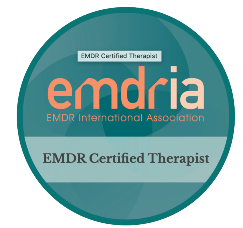Benefits of Counseling and EMDR Therapy in the Treatment of Pain
EMDR Therapy is beneficial in the treatment of pain. For many people struggling with pain, some challenges go beyond what medical treatment can address. There are often ramifications of the pain that leave patients feeling depressed, frustrated, defeated, and more. Specifically, with regard to pain, it can be extremely challenging and frustrating when a patient is working closely with their physician. The physical components of the pain are resolved, yet they still are experiencing pain. The struggles are real and can dramatically impact one’s quality of life.

Why do I feel pain when I know the injury is healed?
Memory networks, which hold all of the components of each experience, are stored in the brain. So, when an injury or experience of pain related to various conditions occurs, the pain itself becomes part of the memory that can be easily triggered, leaving the client “feeling” the pain even though it is the memory of the pain they are experiencing. That memory of the pain often feels as accurate as the actual tissue injury. So, even though physicians may have already addressed and even healed the physical cause of the pain, it can feel as though you’re still experiencing it.
EMDR Therapy in Pain Treatment
In cases such as this, counseling and EMDR Therapy can help dramatically in the treatment of pain, as it works to address the memory of the pain and the subsequent manifestations of it. At Greenwood Counseling Center, we specialize in using EMDR therapy to address these issues and help resolve the problems related to the symptoms. Research strongly supports EMDR therapy for the treatment of chronic pain and has shown that it substantially decreases pain following the therapy.

Understanding EMDR Sessions for Pain
Therapists providing EMDR to treat the experience of pain will begin by learning about the history of the pain. They will identify its origin, any traumas related to it, and other experiences of the pain and map out a treatment plan. They will work to enhance coping skills and strategies for managing the pain and other stressors and then begin the EMDR Therapy. Many patients ask how many sessions to anticipate for this work, and it is mainly dependent on the circumstances unique to the patient. Factors that come into play are:
- The history of trauma
- The extent of the trauma
- The extent of the pain and the patient’s adaptive coping mechanisms
Adaptive Memory Network
For clients who are struggling with pain that is resulting from an ongoing physical wound, tissue injury, or physical ailment, as opposed to pain that has physically been resolved, EMDR therapy can still be helpful. Often, pain is intensified or exacerbated by the anticipation of it and the stress it creates mentally when having to cope with the ongoing nature of it. EMDR therapy can help as a viable method in the treatment of pain as it helps to minimize the intensity of the pain, tying more adaptive memory networks into the networks that contain the experience of the pain. By strengthening the adaptive networks, the intensity may decrease, and feelings of control may increase, helping the patient to feel more empowered, hopeful, and less stressed. This increased relaxation and hopefulness can minimize the tension contributing to the pain experience.
Schedule an Appointment with Greenwood Counseling Center Today!
An experienced EMDR therapist can help you identify ways that EMDR can help manage or treat pain symptoms. Many of the therapists at Greenwood Counseling Center work with clients experiencing this issue.
Esra Nutku-Bilir, MD, PhD, LPC, focuses much of her work in this area. She comes from a medical background that she weaves into her EMDR therapy work. She considers somatic and mental health issues to design a treatment plan to address pain symptoms.
Schedule an appointment with our EMDR specialists today!
References:
Grant M, Threlfo C. EMDR in the treatment of chronic pain. J Clin Psychol. 2002 Dec;58(12):1505-20. doi: 10.1002/jclp.10101. PMID: 12455018. https://pubmed.ncbi.nlm.nih.gov/12455018/
Tesarz, J., Wicking, M., Bernardy, K., Seidler, G. EMDR Therapy’s Efficacy in the Treatment of Pain. Journal of EMDR Practice and Research: Vol 13: 4. Nov 2019, DOI: 10.1891/1933-3196.13.4.337. https://connect.springerpub.com/content/sgremdr/13/4/337?implicit-login=true





